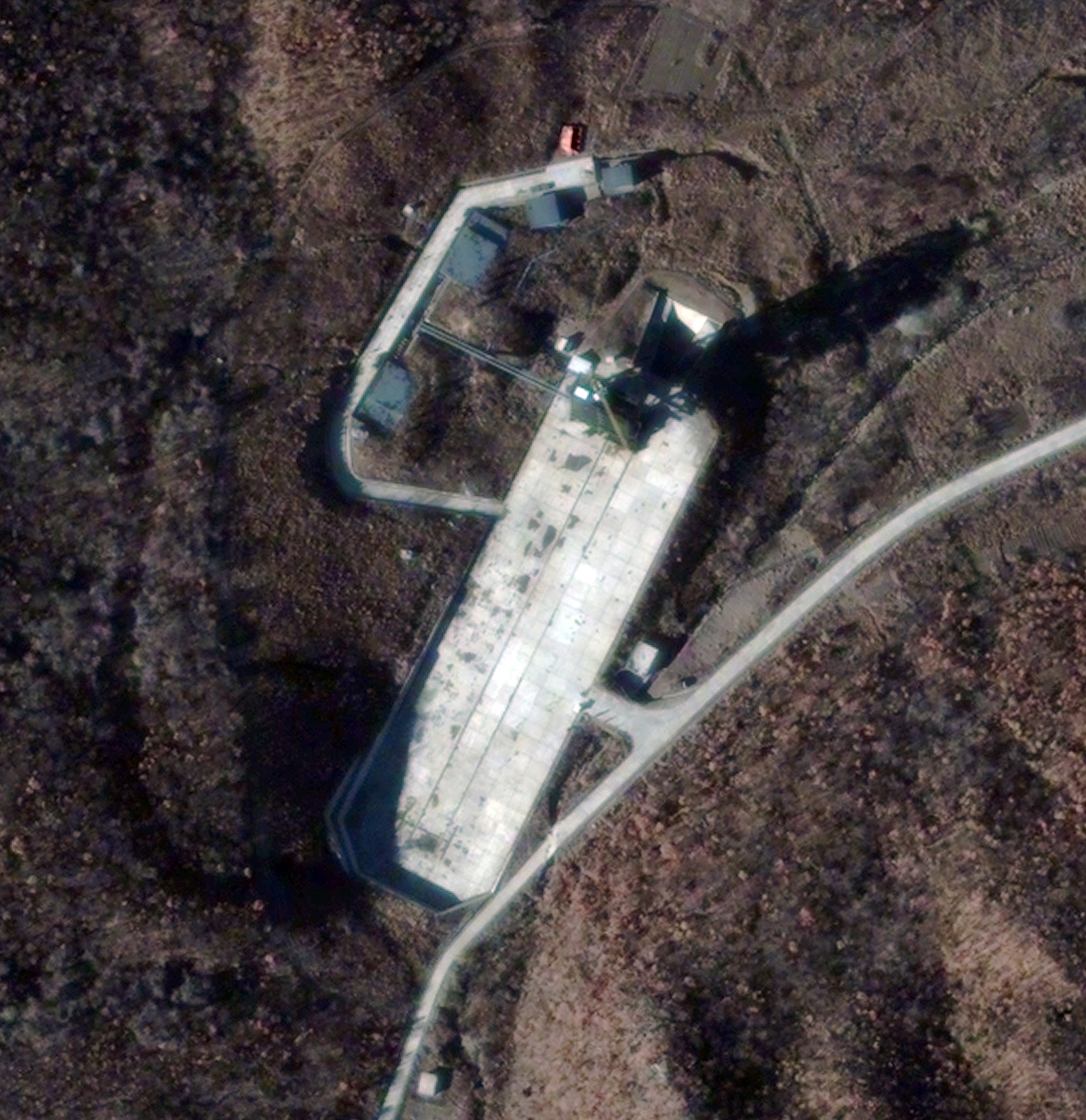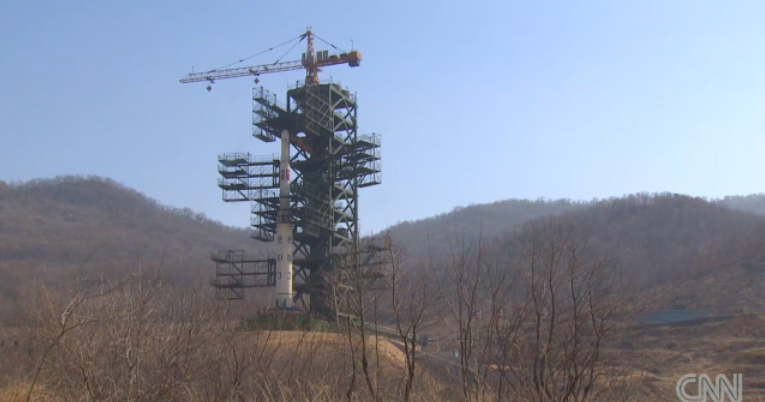
There's little reason to believe that North Korea can actually make good on its recent threats to turn major American cities into "seas of fire," experts say.
Angered by United Nations sanctions and joint U.S./South Korean military exercises, Pyongyang has been ramping up its bellicose rhetoric over the past few weeks, threatening to launch nuclear strikes on Washington, D.C. and other parts of the American mainland.
But the available evidence suggests that North Korea's missiles cannot deliver nuclear warheads to such distant targets, analysts say. Further, the regime likely has just a handful of nuclear weapons, which it may not want to put atop missiles of questionable reliability.
"If I were in South Korea and this were ratcheting up, if I were in Japan — you might worry about chemical weapons or something like that that they could put on the front of [a missile]," said physicist and missile-technology expert David Wright, co-director of the Union of Concerned Scientists' Global Security Program. "But once you get farther away than that, I think it's really a bluff." [Images: North Korea's Rocket Program]

Rising tensions
Tension has been escalating on the Korean peninsula since December, when North Korea launched a satellite into orbit for the first time. Many officials in the United States and allied nations viewed the launch, which used a rocket called the Unha-3, as a thinly disguised test of ballistic missile technology.
Two months later, North Korea conducted its third-ever nuclear-weapons test. Both the launch and the test violated UN Security Council resolutions, so further economic sanctions were imposed on the already isolated communist nation.
Get the Space.com Newsletter
Breaking space news, the latest updates on rocket launches, skywatching events and more!
North Korean officials reacted angrily to the sanctions, and the ongoing American/South Korean military exercises have further stoked their ire. The result has been a stream of threats, with Pyongyang announcing Wednesday (April 3) that it had authorized a potential nuclear attack against the United States.
North Korean leaders have also stated that the nation is now in a state of war with South Korea. In addition, Pyongyang has moved a missile to its east coast, South Korean officials say, and barred South Korean workers from an industrial complex run jointly by the two nations.
While such talk and activity fit into a longstanding pattern of North Korean bluster and brinkmanship, the United States is responding with some countermeasures. The Pentagon announced Wednesday (April 3), for example, that it will deploy a missile-interception system to the U.S. Pacific territory of Guam in the coming weeks, two years ahead of the original schedule.
The United States will also beef up its missile defense sites in Alaska and California over the next few years, Defense Secretary Chuck Hagel said last month.
American mainland safe
North Korea's erratic, secretive nature and its status as a nuclear-armed nation raise the stakes of any standoff it provokes.
While the country's nuclear weapons program is thought to be at a relatively primitive stage, it's possible that North Korea already possesses warheads small enough to be carried large distances by a ballistic missile.
"Having something that's around 1,000 kilograms, or maybe somewhat smaller than that, unfortunately does not seem impossible," Wright told SPACE.com. "We don't really know, but I think you have to take seriously that they could well be there."
However, Wright and other analysts doubt that North Korea's stable of missiles, whose heritage traces back to Soviet Scuds, poses much of a threat to the continental U.S. or American territory in the Pacific.
North Korea's Scuds could hit most of South Korea and its Nodongs can reach Japan, albeit with poor accuracy, Wright said. Another missile called the Musudan has a range of perhaps 2,000 miles (3,200 kilometers), potentially putting Guam at risk. But the Musudan has apparently never been flight-tested.
"There's no reason to actually consider them [Musudans] operational. There's no test data to say that they work," Wright said. "The Guam threat, to me — I think that's bluster. I don't believe that." [How Intercontinental Ballistic Missiles Work (Infographic)]
Unreliable missiles
While satellite-launching rockets can be converted into intercontinental ballistic missiles, there's little reason to fear the Unha-3 rocket right now, Wright added.
"The Unha is just not that powerful," he said. "If we try to imagine them putting a heavier warhead on it and flying it, you can maybe get 7,000 or 8,000 kilometers, but you're not getting really long trajectories that can hit much of the country [the United States]."
North Korea had failed in three previous satellite-orbiting attempts before finally breaking through on Dec. 12, he added, so the nation's space launchers cannot be viewed as reliable and efficient.
Reliability remains an issue across North Korea's rocket and missile program, seemingly making a nuclear strike against the United States an unlikely prospect at this time.
"If you had six to eight nuclear weapons, and they were allowing you to stand up and puff out your chest, would you want to put them on these missiles that have basically unknown reliability, or would you want to do something else with them?" Wright said. "It's just hard for me to believe. On the other hand, who knows how logical the decision-making processes are?"
The risk remains
While a North Korean nuclear attack on the United States appears unlikely at the moment, the situation on the peninsula remains a volatile and dangerous one that could quickly escalate further still, Wright stressed.
Earlier this week, for example, South Korean President Park Geun-Hye said her nation was ready to meet any acts of North Korean provocation with a "strong and immediate" military retaliation.
"My concern is that you might have something that should not get out of control, get out of control," Wright said. "The U.S. and its allies need to figure out how to tamp this down a little bit. I'm really worried about a situation where some silly incident sparks off something that has big consequences."
Follow Mike Wall on Twitter @michaeldwall. Follow us @Spacedotcom, Facebook or Google+. Originally published on SPACE.com.
Join our Space Forums to keep talking space on the latest missions, night sky and more! And if you have a news tip, correction or comment, let us know at: community@space.com.

Michael Wall is a Senior Space Writer with Space.com and joined the team in 2010. He primarily covers exoplanets, spaceflight and military space, but has been known to dabble in the space art beat. His book about the search for alien life, "Out There," was published on Nov. 13, 2018. Before becoming a science writer, Michael worked as a herpetologist and wildlife biologist. He has a Ph.D. in evolutionary biology from the University of Sydney, Australia, a bachelor's degree from the University of Arizona, and a graduate certificate in science writing from the University of California, Santa Cruz. To find out what his latest project is, you can follow Michael on Twitter.









